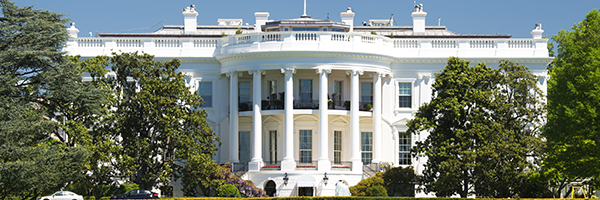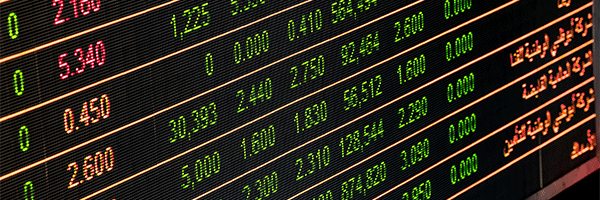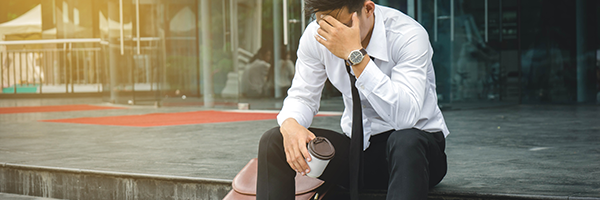 April 26, 2025
April 26, 2025
What You Need to Know Today:
Is Wall Street finally getting tired of the tariff games?
So first stocks sold off after President Donald Trump announced 25% tariffs on imports from Mexico and Canada. Then stocks rallied when the White House said tariffs on auto imports from Mexico and Canada would be postponed by a month. Today, the tariff news is that higher duties on agricultural products imported from Mexico would be postponed fora month. But at the close today the Standard & Poor’s 500 stock index was down 1.58% and the NASDAQ Composite was off 2.11%. The CBOE S&P 500 Volatility Index, the VIX “fear index,” was up 15.27% to 25.27. There was so much going on in the financial markets today that it’s impossible to say how much of today’s decline was due to a growing realization that delays of a month are essentially insufficient to reorder supply chains constructed by years or decades of investment.

Paul Krugman puts some numbers on the effects of Trump’s tariffs
Assuming that conventional economics still has some validity and that economic history has some predictive value, Paul Krugman, who won his 2008 Nobel-prize in economics for his work on international trading patterns, has put some numbers on the likely effects of the higher tariffs proposed by President Donald Trump. In his Substack (Krugman left the New York Times after 25 years at the end of 2024) he laid out this math.
Imports are about 11% of U.S. GDP. A first-pass estimate would be that tariffs on the scale Trump is threatening would be a 25% sales tax on goods that account for 11% of consumer spending. That would raise the cost of living by almost 3%–well over 3% if, as Trump has said he intends in some speeches, he puts much higher tariffs on imports from China. Since median household income is more than $80k, that’s around $2500 a year for the typical household.

Apple’s iPhone sales dove in China for the December quarter
Sales of Apple’s iPhones dove 18.2% in China during the December quarter, according to independent research firm Counterpoint Research. The company’s flagship handsets, China’s top sellers a year earlier, relinquished the top spot to Huawei Technologies. Apple slipped to third in the world’s largest smartphone market over the three months with a market share of roughly 15%. The drop in China drove a global slump of 5% in iPhone sales during the key shopping period, Counterpoint reported.

Drill baby, drill pledge sends oil prices down today
Oil slid as U..S President Donald Trump promised to boost U.S. crude production. Brent crude retreated almost 1% to near $80 a barrel.

Saturday Night Quarterback says, For the week ahead expect…
I expect big market moves from some of new President Donald Trump’s initial batch of executive orders. Trump has promised lots of moves for Day One. Now it remains to be seen what executive orders he actually signs in his first days in office and which ones move the financial markets.

Mortgage rates top 7%
Mortgage rates rose this week to the highest level since May 2024. The average 30-year mortgage rate jumped to 7.04% through Wednesday, January 15, up from 6.93% a week earlier. Average 15-year mortgage rates also rose to 6.27% from 6.14%, according to Freddie Mac It’s the fifth straight week that mortgage rates have moved higher.
Special Report: My 10 Picks for how to invest in climate change NOW–3 first 3 picks, LAZR, PLBF and GWH
Here’s how I characterize developments in the global climate crisis in 2023: It was the year when hot air confronted cold cash. And as you might expect cold cash won.
Which gives me the framework for how to invest in the global climate crisis over the next 12 to 24 months. I’m going to use natural gas to develop my investing paradigm. And then I’m going to give you four sectors in which to concentrate your investments. And 10 specific picks for your money. I expect that I’ll be revisiting the topic of how to invest in the global climate crisis again before too long–because I think today’s paradigm will need substantial revision not all that far down the road.
In Part 1 today, I’m going to develop that paradigm. In Part 2 I’m going to tell you why I think nuclear energy, utility scale battery storage, wind and solar are the sectors that deserve your investment cash and attention (and why electric vehicles don’t make the cut now.) In Part 3, I’ll give you the ten stocks and ETFs I’d pick for these four sectors.
Live Market Report (20 minute delay)

Moody’s cuts outlook for U.S. credit rating to negative
Moody’s Investors Service turned negative on the United State’s credit rating outlook Friday after the market close, citing risks to the nation’s fiscal strength and political polarization. The credit rating company lowered the outlook to negative from stable, even as it affirmed the nation’s rating at Aaa, the highest investment-grade notch.

Don’t give up on your volatility hedges yet–look what’s on the horizon
My bets on rising volatility have been hammered in the last few days. The December 20 Call Options on the CBOE S&P 500 Volatility Index (VIX) at $280 a contact dropped another 21% today to $121 a contract. The January 17 Call Options at 17 that I bought for $268 closed at $211, down another 16%.The VIX itself ended the day at 14.23, down 7% for the session. It’s sure hard looking at losses like this. But I would remind you that the VIX is very volatile. The volatility index was at 21.71 on October 20. And that the calendar is marked with two big events that could reunite financial market volatility, one courtesy of the House of Representatives and the other courtesy of the Federal Reserve.

What the Fed giveth, the Fed taketh away
Eight days ago Federal Reserve chair Jerome Powell set off a financial market rally when the markets thought they heard him signal that the Fed was done with interest rate increases. Today, November 9, Powell very clearly said (at an International Monetary Fund conference in Washington) that the Fed won’t hesitate to raise rates if a hike is needed. Other Fed officials have recently said the same thing.

The big pay off for Eli Lilly is still ahead
On Wednesday the Food and Drug Administration approved Mounjaro from Lilly, as an obesity drug, after clinical trials showed that patients lost an average of 18% of their body weight. The drug will be marketed as Zepbound in the obesity market. This puts Lilly into direct competition with the wildly popular Wegovy weight-loss drug from Novo Nordisk (NVO)

Is the job market weakening? Look for a hint in tomorrow’s initial claims report
It’s not a big shift, but it may be a trend. The weekly initial claims for unemployment report–a new one comes out on November 9–has recently shown a very gradual weakening of the U.S. jobs market. Last week in the November 2 report for the week ended October 28, the number of new claims for unemployment rose to 217,000, an increase of 5,000 from the previous week. The four-week moving average, which smooths week to week noise–climbed 2,000 from the four-week moving average the prior week. Will tomorrow’s November 9 report show a continuation of this very subtle trend?

Oil rally is over–pending any explosion in the Middle East
Oil prices fell again on Wednesday, November 8. West Texas Intermediate, the U.S. benchmark, lost another 2.30% to $75.59 a barrel. International benchmark Brent dropped 2.19% to $79.82 a barrel. The cause? A drop in China's exports that fueled fears that demand from...

A good auction for Treasuries sends 10-year yield to 4.51% today
Stocks had a mixed close today, November 8. The Standard & Poor’s 500 was up just 0.03% and the NASDAQ Composite actually fell by 0.05%. The small-cap Russell 200 lost 1.17% as small company stocks continue to send a warning sign about the economy and bond yields. I think it would have been much worse without a strong action for 10-year Treasuries today A successful auction–lots of demand at lower yields–of $40 billion in 10-year notes took the yield on the 10-year Treasury down 6 basis points to 4.51%.

What a surprise! Consumers are in debt trouble
Credit card debt surged again during the third quarter and so did the number of people missing payments, according to data released today, November 7, by the Federal reserve Bank of New York. Credit card balances rose by $48 billion in the third quarter to a record high of $1.08 trillion The $154 billion year-over-year gain in debt was the largest such increase since of this beginning of this data in 1999.

Does the red for the Russell 2000 tell us something about the duration of this rally?
The small-cap Russell 2000 fell today by 1.29% at the close. All the other major indexes were up: the Standard & Poor; 500 gained 0.18%; the Dow Jones Industrial Average added 0.10%; the NASDAQ Composite tacked on 0.30%; and the NASDAQ 100 climbed 0.37%. I find this “interesting.” That’s “interesting” as in “watch out” and not “interesting” as in “I’m buying this rally.”

Are financial markets getting interest rates wrong again?
The financial markets continue to swing from extreme to extreme in sentiment. The markets were wrong at the beginning of last week. It’s likely the markets are wrong again.

Saturday Night Quarterback says, For the week ahead expect…
Nothing this week from new House Speaker Mike Johnson suggests that Congress will act in time to prevent a U.S. government shutdown on November 17.

The small-cap Russell 2000 is up 8.5% in a week–time to go short
On Monday, I will add to my short position in the small-cap Russell 2000 by buying more of the ProShares Short Russell 2000 ETF (RWM) for my Jubak Picks Portfolio. This buy will give me two positions in the ProShares Short Russell ETF. The first position, added to the portfolio on July 23, 2023 is up 0.08% as of the close on November 3. Why go all in on shorting the Russell now?

All it took was a weak jobs report and stocks are off to the races
The U.S. economy added “only” 150,000 jobs in October, the Bureau of Labor Statistics announced this morning, November 3. Economists had projected that the economy would add 180,000 jobs for the month. The unemployment rate climbed slightly to 3.9% from 3.8%, And the government statisticians revised September’s shocking 336,000 job increase the month down to 297,000 and revisions to the August and September totals took 101,000 jobs out of the totals for those to months. The Wall Street conclusion: The Fed has done its job and the economy has slowed.

Apple revenue falls again, warns holiday quarter will be flat
So let’s see how the market takes this tomorrow.
Today stocks staged an impressive upside more. The Standard & Poor’s 500 closed up 1.89% and the NASDAQ Composite ended the day 1.78% higher. The small cap Russell 2000 was the day’s best performer with a win of 2.67% Tomorrow? Well, the October jobs report released at 8:30 will certainly help set the tone for the day with a weak report likely to reinforce the belief that the Federal Reserve is done aiding interest rates. But given how much of the recent bounce has been fueled by a return of optimism about technology stocks, it’s likely that Apple’s disappointing results, announced after the close of trading today, Thursday, November 2, will determine the direction of the trend.

The biggest good news from Barrick Gold’s earnings aren’t the earnings
Yesterday, Thursday, November 2, Barrick Gold (GOLD) reported earnings of 24 cents a share for the company’s this quarter. That was ahead of the 21 cents a share consensus estimate among Wall Street analysts. In the third quarter of quarter of 2022, the company reported earnings of 13 cents a share. The surprise was the fourth for Barrack in the last four quarters. But to me other news overshadowed the earnings themselves.

Are you glad that the stock market correction is all over? So why am I buying more VIX Call Options?
Whew. Glad that’s done with. No more worries about rising interest rates or higher bond yields. No more fretting over lower earnings and revenue guidance for the fourth quarter and 2024. No more nightmares about a wider Middle East war. Or a government shutdown on November 17. Or…
Well, you get the idea.
I don’t think any of these things are behind us. The rally of the last day and a half–I’m writing this at 1 p.m. Nw work time on Thursday–is a product of a little bit of possible good news from the Fed and from the U.S. Treasury (on a small reduction in the size of the next Treasury auction) and a temporarily oversold market resulting from a lot of bad days in a row. I’m not saying this is just a dead cat bounce (you know the image–even dead cats bounce, but they don’t bounce far). Good news from Apple (AAPL) on earning and revenue after the close today. And tomorrow’s jobs report for October could be weak enough to keep the “Fed is done” narrative going without being so weak that it resurrects fears of an economic slowdown.

Federal Reserve holds rates steady as expected, so why did 10-year yields fall 18 basis points?
Certainly, it wasn’t any surprise that at today’s meeting the Federal Reserve decided to keep its policy rate steady at 5.25% to 5.50%. Going into the meeting the CME FedWatch tool put the odds of the Fed standing pat on rates at close to 100%. So why then the huge rally in the 10-year Treasury that pushed yields down 18 basis points on the day to 4.76%?

We are rightly skeptical of all of China’s economic data–but we KNOW the unemployment figures are cooked
Anyone who has followed China’s economy or invested in the country’s stocks is righty skeptical of all of the country’s economic data. The GDP growth numbers, for example, always seem to come in near target even when other measures show that the economy has hit a pothole. But right now, when the country faces a huge employment crisis and millions of migrant workers have no jobs and no safety net and millions of recent college graduates can’t find work, we know that the official numbers are a crock of chicken manure. And how do we know this? Because the Chinese government tells us so.

Not quite as bad as expected–Treasury increases its bond sales to just $112 billion and not the $114 billion feared
I guess it’s good news. Today the U.S. Treasury Department said it will slow the pace of increases in its longer-dated debt auctions in the November 2023 to January 2024 quarter to just $112 billion in the next auction, up from $103 billion. Primary dealers surveyed by Bloomberg had expected an increase to $114 billion in next week’s quarterly refunding.

And don’t forget Friday’s report on October jobs–will we get another surprise?
The “experts” expect that the Labor Department’s employment situation report on Friday, November 3, will show that the U.S. economy added 190,000 jobs in October. That would be a big drop from the 336,000 jobs added in September. But remember that these experts were projecting that the economy would add just 170,000 jobs before the September report.



